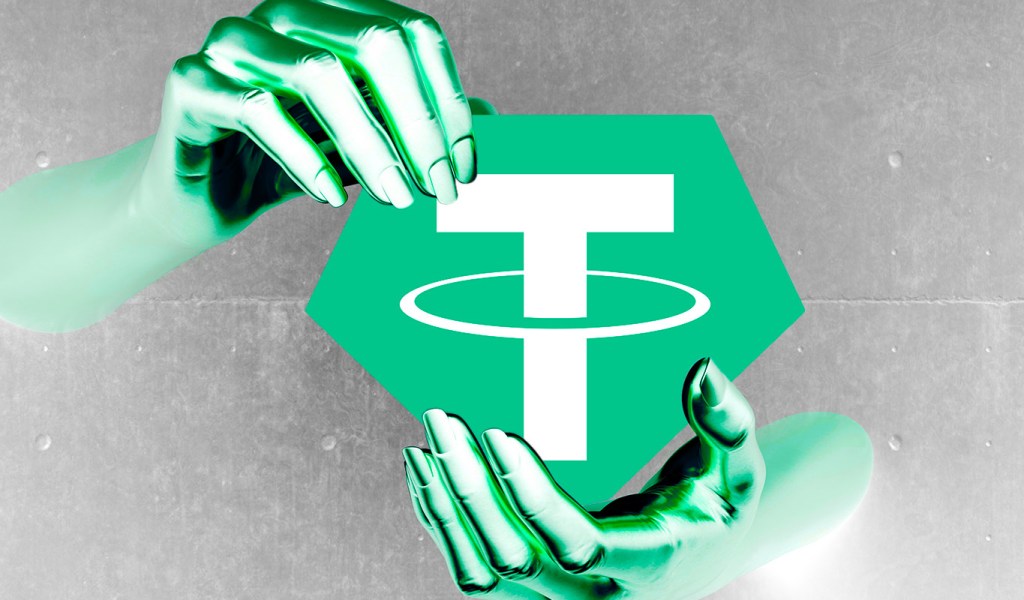
Decentralized finance (DeFi) platform KyberSwap has been hacked to the tune of tens of millions of dollars worth of virtual currencies, causing its native asset to dip. Data from blockchain tracker Lookonchain reveals that $46.5 million worth of digital assets were stolen from KyberSwap, including $20.78 million worth of Wrapped Ethereum (wETH), $9.53 million worth […]
The post Kyber Network Crystal Dips As KyberSwap DeFi Platform Drained $46,500,000 in Ethereum, Arbitrum and Other Assets appeared first on The Daily Hodl.

Blockchain data reveals that stablecoin firms Circle and Tether have frozen coins linked to the recent multi-million-dollar Multichain exploit. Earlier this week, blockchain security firm PeckShield found that Multichain, a cross-chain crypto platform, saw its Fantom (FTM) bridge hacked to the tune of $126 million worth of digital assets. The crypto assets stolen include Chainlink […]
The post Stablecoin Issuers Circle and Tether Freeze Stablecoins Tied to Multichain Exploit: On-Chain Data appeared first on The Daily Hodl.
 On Monday, April 3, the decentralized exchange (dex) platform Pancakeswap launched version 3 of its protocol (v3) on the Binance Coin (bnb) and Ethereum blockchains. The new application aims to improve the performance of the dex protocol and reduce fees by implementing four levels of trading fees. New Features and Improved Capital Efficiency Offered in […]
On Monday, April 3, the decentralized exchange (dex) platform Pancakeswap launched version 3 of its protocol (v3) on the Binance Coin (bnb) and Ethereum blockchains. The new application aims to improve the performance of the dex protocol and reduce fees by implementing four levels of trading fees. New Features and Improved Capital Efficiency Offered in […]
wETH is the ERC-20 compatible and tradable version of ETH and can be used to interact with other ERC-20 assets.
Traders who use the Ethereum network are familiar with the ERC-20 technical standard and have most likely traded and invested in tokens that utilize it. After all, its practicality, transparency and flexibility have made it the industry norm for Ethereum-based projects.
As such, many decentralized applications (DApps), crypto wallets and exchanges natively support ERC-20 tokens. However, there’s one problem: Ether (ETH) and ERC-20 do not exactly follow the same rules, as Ether was created way before ERC-20 was implemented as a technical standard.
So, why does wrapped ETH matter? Briefly put, ERC-20 tokens can only be traded with other ERC-20 tokens, not Ether. In order to bridge this gap and enable the exchange of Ether for ERC-20 tokens (and vice versa), the Ethereum network introduced wrapped Ethereum (wETH). That said, wETH is the ERC-20 tradable version of ETH.
As mentioned, wETH is the wrapped version of Ether, and it’s named as such because wETH is essentially Ether “wrapped” with ERC-20 token standards. Wrapped coins and tokens virtually have the same value as their underlying assets.
So, is wrapped Ethereum safe to trade and invest in? The answer is yes, as far as Ethereum is concerned. wETH is pegged to the price of ETH at a 1:1 ratio, so they’re basically the same. The only difference between wrapped tokens and their underlying assets is their use cases, especially for older coins like Bitcoin (BTC) and Ether.
Wrapped tokens are like stablecoins, to a certain degree. Come to think of it, stablecoins can also be considered “wrapped USD,” since they have the same value as their underlying asset, the United States dollar. They can also be redeemed for fiat currencies at any time.
Bitcoin also has a wrapped version called Wrapped Bitcoin, which has the same value as Bitcoin. The same goes for other blockchains like Fantom and Avalanche.
Wrapped Ethereum tokens can be unwrapped after they’ve been wrapped, and the process is simple: Users just have to send their wETH tokens to a smart contract on the Ethereum network, which will then return an equal amount of ETH.
Wrapped tokens solve interoperability issues that most blockchains have and allow for the easy exchange of one token for another. For example, users cannot normally utilize Ether on the Bitcoin blockchain or Avalanche on the Ethereum blockchain. Through wrapping, underlying coins are tokenized and wrapped with a certain blockchain’s token standards, thus allowing for their use on that network.
Unlike Ether, wETH cannot be used to pay gas fees on the network. Because it is ERC-20 compatible, however, it can be used to provide more investment and staking opportunities on DApps. wETH can also be used on platforms like OpenSea to buy and sell through auctions.
Wrapping Ether tokens involves sending ETH to a smart contract. The smart contract will generate wETH in return. Meanwhile, ETH is locked to ensure that the wETH is backed by a reserve.
Whenever wETH is exchanged back into ETH, the exchanged wETH is burned or removed from circulation. This is done to ensure that wETH remains pegged to the value of ETH at all times. wETH can also be acquired by swapping other tokens for it on a crypto exchange, such as SushiSwap or Uniswap.
So, what is the point of wrapped Ethereum? According to WETH.io, the ultimate goal is to update Ethereum’s codebase and make it ERC-20 compliant in itself, eventually eliminating the need to wrap Ether for the purpose of interoperability. But, until then, wETH continues to remain useful in providing liquidity to liquidity pools, as well as for crypto lending and NFT trading, among others.
In short, it’s not really a matter of ETH vs. wETH since wrapping Ethereum is more of a workaround than a permanent solution. With the number of upgrades slated to happen on the Ethereum network over the years, Ethereum seems to be moving closer toward better interoperability by the day.
There are several ways to wrap Ether. As mentioned, one of the most common ways to do so is by sending ETH to a smart contract. Another method is swapping wETH for another token via a crypto exchange.
Let’s look at three ways to generate wETH in the sections below:
In this example, we’ll be using the OpenSea platform to convert ETH to wETH using the wETH smart contract.
First, click on “Wallet,” located at the top-right corner of OpenSea. Then, click on the three dots next to Ethereum and select “Wrap.”

Next, enter the value for the amount of ETH to be converted to wETH. Then, click “Wrap ETH.” This will call the wETH smart contract to convert ETH into wETH.

A MetaMask pop-up will appear, prompting the user to sign the transaction.

A confirmation message will then appear once the wrap is complete.

The converted wETH will show up in the wallet portion of the user’s OpenSea account. The wETH will bear a pink Ethereum diamond as its logo, distinguishing it from ETH.
When using Uniswap, a user first has to connect their wallet and ensure the Ethereum network is selected.

Then, click “Select Token,” located at the bottom field, and select wETH from the list of options.

Now, input the amount of ETH to be converted to wETH and click “Wrap.”

The transaction will then need to be confirmed from the user’s crypto wallet. Gas fees in ETH will also need to be paid at this stage. Once all the details are in order and the transaction has been confirmed from the user’s end, all that’s left to do is to wait for the transaction to be confirmed in the blockchain.
Upon opening the MetaMask wallet, begin by ensuring that the selected network is “Ethereum Mainnet.” Then, click “Swap.”

Then, select wETH from the “Swap to” field.

Next, input the amount of ETH to be swapped. Then, click “Review Swap.”

A window displaying a quote of the conversion rate will appear. Since it involves the conversion of ETH to wETH, the rate should be 1:1. To finalize the transaction, click “Swap.”

Unwrapping Ether can also be done manually, such as by interacting with a smart contract. For instance, ETH can also be unwrapped in the same way that it can be wrapped via the wETH smart contract on OpenSea. The only difference is that instead of clicking “Wrap ETH,” the user has to click “Unwrap wETH.”
The same goes for swapping wETH back to ETH, which can be done by using Uniswap or MetaMask. The process for unwrapping is essentially the same as the process outlined above for wrapping ETH on both platforms. The only difference is that the values should be changed (from wETH to ETH).
Ethereum co-creator Vitalik Buterin himself pinpointed one of the main disadvantages of wrapped assets. According to Buterin, the main problem with many of these wrapped assets is their sensitivity to centralization.
Currently, wrapping assets are not Turing-complete and cannot be automated via the Ethereum blockchain. As discussed, wrapping is usually only carried out using central programs, thus the concern for possible manipulation and abuse.
Issued wrapped tokens depend on the third-party platforms that issue them, inevitably subjecting decisions pertaining to wrapped assets to central entities. Buterin voiced his concerns about the possibility of such a mechanism undermining the core principles of decentralization and transparency that the blockchain industry stands for.
Currently, wrapped tokens make it possible for blockchains to interact with one another. This allows for a much more decentralized ecosystem, where tokens can be easily traded or exchanged between different platforms.
Better interoperability solutions are on the horizon, such as updating blockchains’ codebases to be compatible with each other or using bridge chains. For Ethereum, at least, the plan is to eventually phase out the use of wrapped tokens like wETH alongside network developments.
This does not mean that wrapped tokens are going away anytime soon. They will continue to play an important role, providing valuable service to those who need it. For one, wrapped tokens can serve as a stabilizing force between different blockchains, as they help maintain consistent prices between them.
They can also help facilitate cross-chain atomic swaps, which are becoming increasingly popular. In the long run, however, wrapped tokens will likely become less and less necessary as blockchains become more interoperable.
Purchase a licence for this article. Powered by SharpShark

Top crypto exchange Binance is taking steps to prepare for Ethereum’s (ETH) merge to a proof-of-stake consensus mechanism. The merge is currently expected to happen in about one week, according to the Web 3 infrastructure company Blocknative. Explains Binance in a new announcement, “To prepare for the Ethereum merge and secure the allocation of forked […]
The post Binance To Temporarily Suspend Withdrawals and Deposits of Ethereum and Wrapped Ether To Prepare for the Merge appeared first on The Daily Hodl.

A popular play-to-earn metaverse altcoin built on Ethereum is seeing significant gains after project developers revealed plans for community governance. In a new blog post, Axie Infinity (AXS) highlights the game’s tremendous growth over the past year and announces long-term plans to implement what it calls “progressive decentralization” to empower the community. “Players deserve ownership […]
The post Top Ethereum Gaming Altcoin Erupts After $1,700,000,000 Treasury Plans Are Unveiled appeared first on The Daily Hodl.

A Solana-based blockchain bridge has been hacked to the tune of $320,000,000 worth of leading altcoin Ethereum (ETH). Wormhole, a cross-chain platform that allows users to transfer crypto assets between different blockchains, took to Twitter to confirm the hack to its 41,000 subscribers. “The Wormhole Network was exploited for 120,000 Wrapped Ethereum (wETH). ETH will […]
The post Cross-Chain Crypto Platform Hacked for Staggering $320,000,000 Worth of Ethereum (ETH) appeared first on The Daily Hodl.

The bearish continuation setup could push Solana price dropping to nearly $50 in the sessions ahead.
Solana (SOL) became one of the worst performers among the top cryptocurrencies on Feb. 3 as traders assessed its links with the second-biggest hack to date.
SOL price dropped by 5.50% to below $96.50 as Wormhole, a bridge between Solana and Ethereum blockchains, reportedly lost $325 million worth of Wrapped Ethereum (wETH) due to a technical vulnerability.
Prior to the hack on Wednesday, SOL was trading as high as $112.
Solana security hole needs fixing asap?
— dom.icp ∞ (@dominic_w) February 3, 2022
Seems their consensus proceeds with only 33% of the nodes
Hard math proofs show you need 66%+ for safety. No ifs no buts
Possibilities: 1) is insecure, 2) is centralized, or 3) they've broken Computer Science (unlikely) pic.twitter.com/yqfW3QnfeK
In detail, hackers tricked a series of Solana's smart contracts into signing illicit transactions digitally posing as "guardians," reported blockchain researcher Kelvin Fichter Wednesday night after the hack. He wrote:
"The attacker made it look like the guardians had signed off on a 120k deposit into Wormhole on Solana, even though they hadn't. All the attacker needed to do now was to make their "play" money real by withdrawing it back to Ethereum."
And one withdrawal of 80k ETH + 10k ETH later (everything in the bridge on Ethereum), everything was gone.
— smartcontracts (@kelvinfichter) February 3, 2022
Wormhole said that it would add Ethereum's native token Ether (ETH) "over the next hours" to back wETH on the Solana network on a 1:1 basis. However, the project did not clarify the source of the funds that would be used to buy ETH tokens.
The selloff in the Solana market across the last 24 hours came closer to triggering a bearish continuation setup that may send the SOL price down by another 50%.
Dubbed "bear flag," the pattern emerges when the price consolidates sideways/higher after a strong downside move, called "flagpole." In a perfect world, the price eventually breaks below the consolidation range and falls by as much as the flagpole's length.
So far, SOL/USD has been forming the same bear flag pattern, as shown in the chart below.

The downside target put forth by Solana's bear flag sits near $50, almost halfway down where the SOL price has been trading on Thursday.
Related: Report crowns Solana for using least energy per transaction, but there's a catch
Last year, Solana sprinted into the top-ten cryptocurrencies by market cap with SOL rising by more than 11,000% as investors bet on the growth of decentralized finance (DeFi) and nonfungible token (NFT) sectors.
However, entering 2022, the SOL price has fallen sharply, wiping almost half Solana's market capitalization amid a broader crypto market decline — that also battered Bitcoin (BTC), Ether, and other top-ranking digital assets.
The views and opinions expressed here are solely those of the author and do not necessarily reflect the views of Cointelegraph.com. Every investment and trading move involves risk, you should conduct your own research when making a decision.

The Eth2 staking contract is now the single-largest address by Ether holdings.
The staking contract for the Ethereum 2.0 blockchain is now the single-largest holder of Ether.
According to blockchain analytics provider Nansen, the Eth2 staking contract has surpassed Wrapped Ethereum (wETH) to become the single largest holder of ETH. Unlike Ether, Wrapped Ether adheres to the ERC-20 standard, making it the favored representation of ETH among DeFi protocols that use ERC-20 tokens.
The findings were posted to Twitter by Alex Svanevik, CEO of blockchain analytics firm, Nansen, on Aug. 17. The data shows that the Beacon Chain’s deposit contract holds 6.73 million ETH — worth roughly $21.5 billion at current prices.
By contrast, Nansen’s data suggests the Wrapped Ethereum contract holds 6.7 million ETH ($21.4 billion), followed by Binance with 2.29 million ETH ($7.3 billion).
Check who's #1 ETH holder now guys! pic.twitter.com/3isDLkrv7I
— Alex Svanevik ✨ (@ASvanevik) August 16, 2021
The quantity of Ether locked staked on Eth2 currently represents 5.7% of Ethereum’s circulating supply, according to CoinMarketCap. There are now 210,000 validators for the Eth2 network according to Beaconcha.in.
Currently, Ether staked on Eth2 is locked up and cannot be withdrawn from the contract until Ethereum’s forthcoming chain-merge that will meld the Ethereum and Eth2 networks. The chain merge is currently expected to take place during the first half of 2022.
According to Staking Rewards, Eth2 is currently the third-largest Proof-of-Stake network by staked capitalization, ranking behind Cardano’s $49 billion and Solana’s $27.5 billion.
Related: Staked ETH Trust opens Ethereum staking to accredited investors
The news comes shortly after a major milestone for Ethereum’s Eth2 roadmap, with the network successfully deploying its London upgrades on August 5.
The hard fork contained the highly anticipated Ethereum Improvement Proposal 1559, which introduced a base transaction fee that is burned from supply into Ethereum’s fee market.
According to Ultrasound.Money, 54,916 ETH worth $175 million have been destroyed through transaction fees in the dozen days since London went live. At a current burn rate of 3.28 ETH, more than 140,000 ETH could be burned each month should network activity remain consistent.
At the time of writing, ETH prices had retreated 3.3% over the past 24 hours to trade at $3,180.